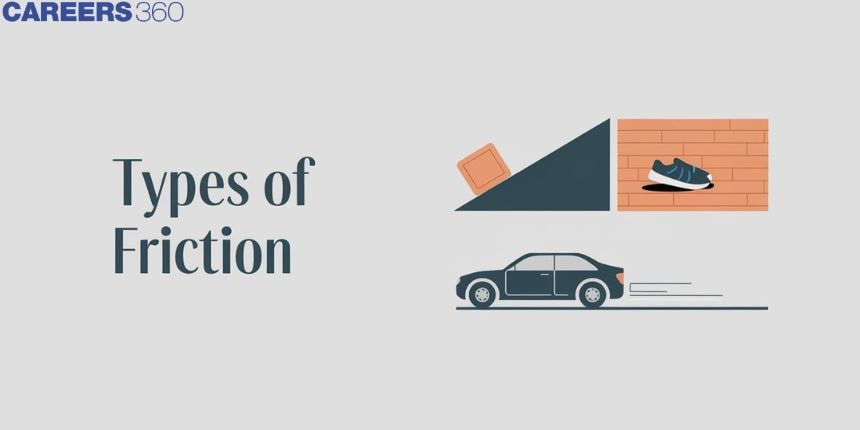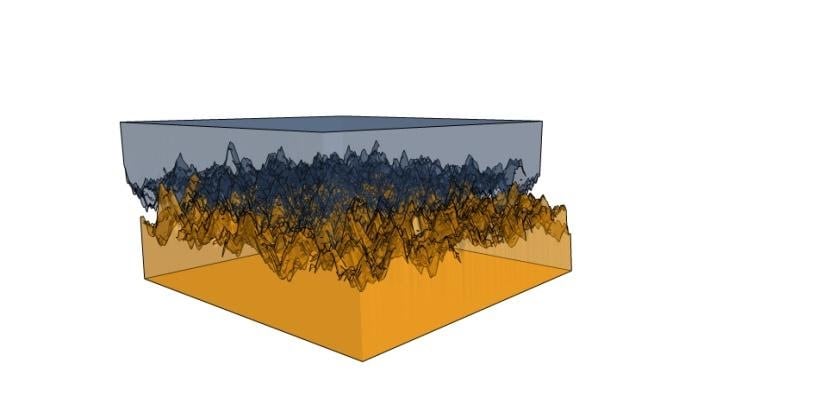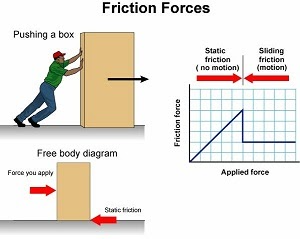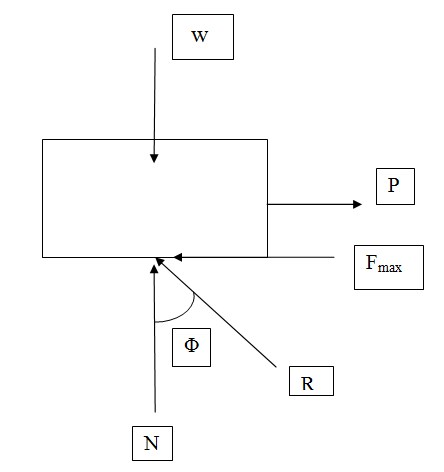Types of Friction - Static, Sliding, Rolling And Fluid, FAQs
The article includes what is friction, what are the factors affecting friction, what is friction in Science, and what does friction produce. It also explains the concept of work done by frictional force, angle of friction, and the application of friction.
This Story also Contains
- What is friction?
- Types of friction/ Types of frictional force/ What are the types of friction/ Different types of friction
- Important definitions on friction

Note: Friction for class 11, the definition of friction for class 8, angle of repose for class 11 is also mentioned in the article.
Introduction of friction
The concept of friction was given by many scientists worldwide. Aristotle, Pliny the Elder, and Vitruvius were some of them.
Origin of friction: The foundation for the study of friction was first laid by the famous scientist Leonardo da Vinci. He conducted a systematic study on friction and gave classical laws. Through his research, he understood how the working of machines depends on friction. Many years before Newton’s law of motion, Leonardo da Vinci had explained the basic laws of friction. The law comprises two statements that state:
- The areas in contact have no effect on friction.
- If the load of an object is doubled, its friction will also be doubled.
From the study, he claimed that each body moves with different ease. Due to the roughness of the material, it experiences friction.
This theory was then studied by different scientists for further research.
Also read -
What is friction?
The opposing force that resists the relative motion between the bodies in contact is the definition of friction or frictional force.
Explain the concept of friction.
Consider two objects that are in contact with each other. There is always some resistance to the sliding or rolling of those objects. The theory of friction is mainly due to the irregularities on the objects that are in contact. For a normal eye, the object may look smooth but it also has minute irregularities. It can be observed through the microscopic view. The roughness of the material is mainly responsible for friction.

Figure 1 Microscopic view of objects with irregularities on their surface
The two objects having irregularities bind together and lock themselves. To move any object, a force is required to remove the locking between the objects. Objects with a rough surface have more irregularities and so it requires a greater force of friction.
Types of friction/ Types of frictional force/ What are the types of friction/ Different types of friction
Depending on the types of motion there are four different classifications in friction. They are,
- Static friction: The opposing force between two or more solid objects that do not have any relative motion between them is called static friction. In simple words, it is the friction applied to an object at rest. The nature of the surface affects static friction.
- Sliding friction: When two objects are sliding over one another, the friction applied is called sliding friction.
- Rolling friction: When one object rolls over the other the applied friction is called rolling friction. Rolling replaces sliding as friction due to sliding is always more than rolling.
- Fluid friction: In fluids, the opposing force present in between different layers as they move relative to each other is called fluid friction.
Friction images are shown below,


What are the factors affecting friction or frictional force?
Friction depends on the following factors:
- Nature of the objects in contact: Due to the more irregularities, objects having rough surfaces provide greater friction.
- Nature of the surface: Roughness or smoothness affects friction. The roughness of the surface and the roughness of the objects together increase frictional force.
- Type of friction: Friction depends on whether the action is rolling or sliding. Friction due to sliding is always more than rolling.
- Normal force acting on the sliding objects: Friction increases with the increase in the normal force acting on the object. This is because the force which is perpendicular to the sliding plane increases the interaction between the object and thus friction increases.
- Mass of the object: Friction increases with the increase in the mass of the object.
What does friction produce?
Friction produces heat energy. When two objects move over each other, the kinetic energy produced by the objects is converted to heat energy.
| Related Topics Link, |
Work done by frictional force
The frictional force is an opposing force. It is the opposite of the relative motion of the body. When an object is pulled, friction acts opposite to the direction of displacement. Displacement will be negative.
Since work done W=F×d
Work done is directly proportional to the displacement d. Hence work done by the frictional force will also be negative.
Also Read:
Important definitions on friction
Define internal friction.
When an object undergoes deformation, the force opposing the motion between the elements forming the object is called internal friction.
Angle of friction

Figure 2 Angle of friction
Angle made by the resultant (R) of the frictional force Fmax and the normal reaction (N) with the direction of the normal reaction is called the angle of friction.
Define cones of friction.
When two surfaces are at rest, the horizontal surface applies resultant force on another surface. When this condition is located in a cone it is called the cone of friction.
Limiting friction
The maximal or highest value of static friction is called limiting friction.
Also check-
- NCERT Exemplar Class 11th Physics Solutions
- NCERT Exemplar Class 12th Physics Solutions
- NCERT Exemplar Solutions for All Subjects
NCERT Physics Notes:
Frequently Asked Questions (FAQs)
The opposing force between the objects sliding across each other is friction.
Opposition to the flow of air along the earth's surface is called surface friction.
Irregularities
The opposing force that resists the relative motion between the bodies in contact is the definition of friction. There are many applications of friction in daily life. They are, applying the brake in a moving vehicle, drilling a nail to the wall, skating, etc.
If the direction of applied force P is gradually changed through 3600, the resultant R generates a right circular cone with a semi vertex angle equal to ϕ.
Friction block describes how surface smoothness is in association with frictional force. It also explains the coefficient of friction.
Friction is a force opposing the motion between the surfaces that are in contact with each other.
The angle of an inclined plane with which a body starts to slide is called the angle of repose.
When an object is kept at rest on an inclined plane, the minimum angle of inclination with which it is about to slide down is called the angle of friction.
There are four types of friction. Static friction, sliding friction, rolling friction, fluid friction.